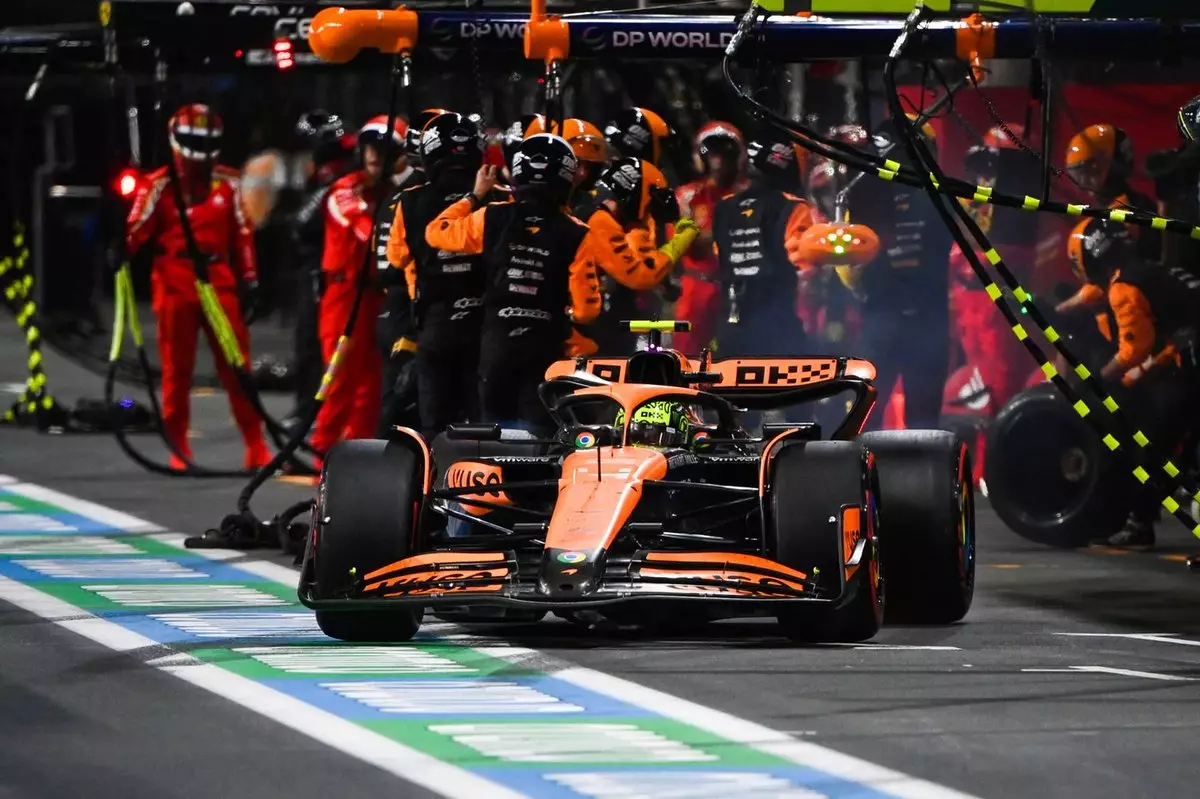Lando Norris made a bold strategic decision during the Jeddah race in Formula 1, opting not to pit during a safety car period caused by Lance Stroll’s crash. Along with a few other drivers, Norris chose to stay out on track in hopes of gaining track position and benefitting from a later safety car period for a cheap pitstop. However, this decision did not pay off as expected, and Norris ended up finishing two places lower than his starting position.
When questioned about the call to remain on track, Norris defended the decision by stating, “We wanted to try something different, and not just stay behind.” He expressed his desire to be more aggressive with the strategy and take risks in order to potentially gain more points. Despite the less than optimal outcome, Norris believes it was the correct call to make at the time.
Norris acknowledged that the decision not to pit was a gamble, with the potential to either gain or lose points. In the end, it did not pay off, but he stands by the team’s decision to try something unconventional. He admitted that in hindsight, it may not have been the best strategy, but he appreciates the effort put into executing the plan.
One of the factors that influenced Norris’s decision to switch to soft tires earlier than planned was to cover Lewis Hamilton’s strategy. He knew that sticking to his original plan of staying out on the medium tires would have left him vulnerable to being overtaken by Hamilton. This reactive move impacted the overall outcome of his race and prevented him from maximizing his performance on track.
During the race, Norris had to fend off challenges from Ferrari rookie Oliver Bearman, who showed impressive performance in his debut weekend. Norris acknowledged Bearman’s strong showing and admitted that the Ferrari car was competitive. Despite his efforts to catch Bearman, Norris fell short due to the limitations of his strategy and tire choices, highlighting the importance of making the right decisions during the race.
Reflecting on the race in Jeddah, Lando Norris recognized that there were aspects of the strategy that could have been improved. While taking risks and being aggressive can sometimes pay off, it is essential to weigh the potential outcomes and make calculated decisions. The experience in Jeddah serves as a learning opportunity for Norris and his team, emphasizing the significance of strategic planning and adaptability in Formula 1 racing.
The Jeddah Grand Prix showcased the challenges and complexities of strategic decision-making in Formula 1. Lando Norris’s bold choice not to pit during the safety car period did not yield the desired results, highlighting the fine line between risk and reward in competitive racing. As Norris continues to grow and develop as a driver, these experiences will shape his approach to future races, emphasizing the importance of critical thinking and adaptability on the track.


Leave a Reply